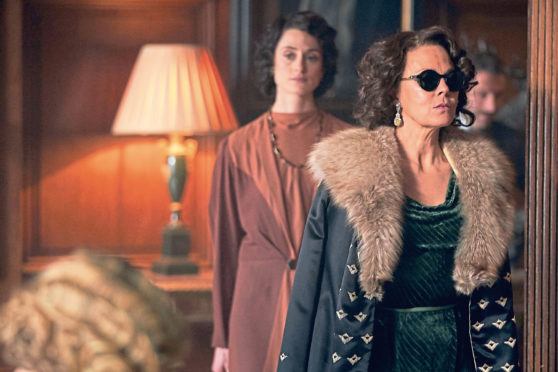
Helen McCrory doesn’t pull any punches when it comes to Peaky Blinders.
You’d think McCrory, who plays Aunt Polly, the matriarch of the Shelby family, would be used to the brutality of their on-screen crimes.
But, at a screening of an episode from the new fifth series, she had to look away at one point.
“I, as Helen, can’t watch it,” admits the 51-year-old Londoner.
“It’s disgustingly violent. And it should be. I think it’s much more disturbing that somebody slashes somebody’s face, or somebody shoots somebody, and it’s all just the end of it.
“It should be horrifying, and you should have the people who are responsible for the violence unable to self-medicate or having mental health problems, or all the things that do happen to people if you kill other people. It is not a natural state of affairs.”
Right from the start of Peaky Blinders, which has proved so successful it’s moved from BBC Two to BBC One, there have been several interesting female protagonists including Ada, the only female Shelby sibling, played by Sophie Rundle, 31.
“They’re not strong female characters, they’re just female characters with all that natural strength,” says Rundle.
“They’re funny and they’re ambitious, and they’re rude and they’re fallible and you know it’s so much more than just being a strong female character – it’s about being multifaceted.
“You’ve got Polly as this matriarch and she’s every bit as badass as Tommy. You know, she’s not there going, ‘Oooh, Tommy dearest!’.”
We’ve now reached 1929, and the world has been thrown into turmoil by the financial crash.
It’s a time of both opportunity and misfortune for the Shelby gang.
And Tommy Shelby MP (played so brilliantly by Dunkirk actor Cillian Murphy) is approached by a charismatic politician with a bold vision for Britain.
At the end of the fourth series, the Shelby gang’s feud with New York Sicilian mafioso Luca Changretta came to blows, changing the family’s lives forever.
It also led to more PTSD for former soldier Tommy. So, how is the flat cap-wearing, chain-smoking gang boss different this series?
“In a way, he’s starting to thaw out, feel things again,” explains the show’s writer Stephen Knight.
“The acts that he did of charity, but for a cynical reason, have gradually become real. He’s slowly discovering that he’s always been a good man doing bad things for a good reason.
“Maybe. But maybe not – you can look at it and say you can’t justify his actions.”
The writer, whose other credits include TV series Taboo, adds: “In this series he’s haunted by things he’s done in the past.
“But I always try to put into context that, whatever bad he’s done since World War One, during the war, at the request of commanding officers, 6-8,000 people were being killed per hour.
“That’s where the moral compass got destroyed and now, he’s basically trying to piece it together.”
Now that Tommy is a politician – in the last series he was elected as Labour MP for Birmingham South – we see him heading down to Westminster.
There, he meets a new character and real-life historical figure Oswald Mosley MP.
And as for what’s in store politically, Knight adds: “It’s quite bizarre how Peaky, whatever period I’m writing in, seems to have a spooky connection to what’s going on at the time”.
“Never more so than with this series where, politically, it’s the early 1930s – there is nationalism, populism, racism sweeping the Western world.
“That’s just fortuitous for me – terrible for the world – in that what I’m writing feels to have a direct connection to the way things are going at the moment.”
Peaky Blinders is on BBC One, Sundays at 9pm.

Enjoy the convenience of having The Sunday Post delivered as a digital ePaper straight to your smartphone, tablet or computer.
Subscribe for only £5.49 a month and enjoy all the benefits of the printed paper as a digital replica.
Subscribe